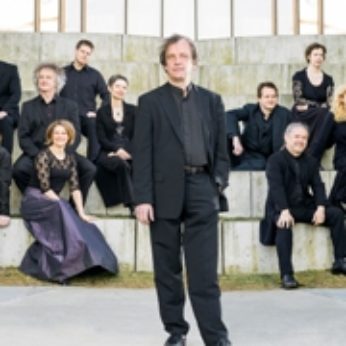Composer: Johann Heinrich Schmelzer (b. 1620 - d. 1680)
Performance date: 01/07/2014
Venue: St. Brendan’s Church
Composition Year: 1677
Duration: 00:07:52
Recording Engineer: Richard McCullough, RTE
Instrumentation Category:Small Mixed Ensemble
Instrumentation Other: 3vn, va, vc, db, lu, hpd
Artists:
Concerto Copenhagen (Peter Spissky, Fredrik From, Antina Hugosson [violins], Torbjörn Köhl [viola], Kate Hearne [cello], Mattias Frostenson [bass], Fredrik Bock [archlute, guitar], Lars-Ulrik Mortensen [harpsichord, director]) -
[baroque ensemble]

Very little is known about Schmelzer’s early life, but in 1630 he entered the Habsburg court in Vienna, eventually becoming the only non-Italian to hold the post of Kapellmeister there over a period of almost 100 years. He was to remain at the court for the rest of his life, gaining a reputation as a prominent composer as well as a virtuoso violinist. Schmelzer was hugely influential in the development of violin technique and instrumental music in Austria in the 17th century. There is no doubt that he was influenced by the Italian composers who were responsible for introducing solo violin repertoire to northern climes, such as Marini, Fontana and Uccellini. Schmelzer in turn influenced the later German and Austrian composers, most notably one of his students, Biber. Schmelzer’s sonata for three violins follows a trend started by his Italian colleagues, and in his work for this setting Schmelzer succeeds in creating something sublime. The opening melody doesn’t grow tiresome despite its many repetitions, and Schmelzer uses thematic repetition many times in the different sections of this through-composed work. Sometimes they are voiced as a simple solo for each violin in turn, sometimes in overlaying fugal entries, creating rich contrapuntal interaction between the instruments. Traces of the Italian canzona style show up in dance-like sections, which are juxtaposed against sudden harmonic changes and chromaticism, bringing an element of drama to this multifaceted work.
Copyright © 2025 West Cork Music. All rights reserved.
Designed and developed by Matrix Internet